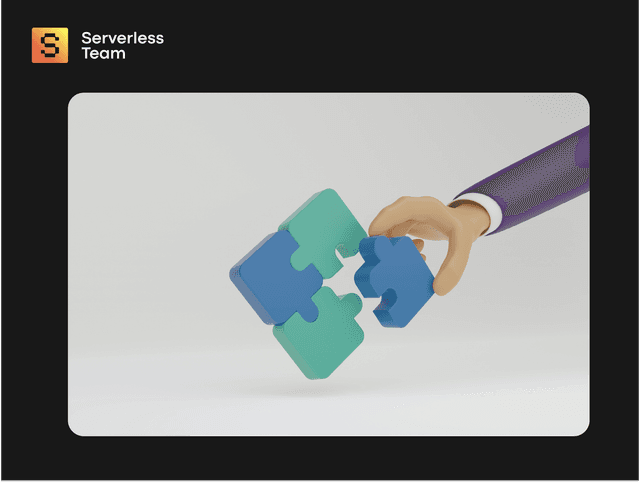IoT, the interconnected web of devices communicating seamlessly, transforms how we interact with the world around us, making it more inventive, more responsive, and infinitely more efficient. Whether it's smart cities, industrial automation, or enhancing the user experience in consumer electronics, IoT is the driving force behind these revolutionary changes.
This comprehensive guide will demystify creating a Proof-of-Concept (PoC) IoT solution with AWS. A PoC acts as a testbed, a crucial step to validate your IoT idea, ensuring its feasibility and potential impact before full-scale implementation.
Leveraging our extensive experience and the powerful capabilities of AWS, we will walk you through the critical phases of developing a PoC IoT solution, from initial conception to the intricacies of implementation. Whether you want to create, build, or develop a proof-of-concept IoT solution with AWS, this guide is your starting point for transforming your innovative ideas into tangible, impactful realities.
Prepare to embark on a journey of discovery and innovation as we unravel the secrets to successfully building a PoC IoT solution with AWS.

We take care of serverless development so you can focus on your business
Don't want to wait for our site launch? Let's talk about your idea right now.


Understanding Proof-of-Concept (PoC) in IoT
A Proof-of-Concept (PoC) is a pivotal milestone, acting as a preliminary model to validate an IoT solution's feasibility, viability, and potential impact. The primary objective of a PoC in IoT is to demonstrate the practicality of an idea or concept, ensuring that it can be brought to fruition and provide tangible value.
Creating a PoC IoT solution with AWS or developing a proof-of-concept model on this platform is about more than just testing the waters; it's a strategic approach to innovation and problem-solving. By building a PoC IoT solution with AWS, organizations can:
- Validate the Concept: Ensure that the IoT solution works as intended and meets the set requirements and expectations.
- Identify Potential Challenges: Uncover any technical or operational hurdles that might arise, allowing for proactive solutions and mitigation strategies.
- Estimate Resources and Costs: Understand the resources, time, and budget required to transform the PoC into a fully-fledged IoT solution.
- Gather Feedback and Improve: Collect invaluable input from stakeholders, users, and team members, leading to refinements and improvements in the final product.
- Demonstrate Value and Secure Buy-In: Showcase the potential benefits and ROI of the IoT solution to stakeholders and investors, securing the necessary support and funding for further development.
Examples of successful IoT PoCs include smart farming solutions that leverage sensors and AWS IoT services to optimize crop yields or healthcare monitoring systems that utilize IoT devices to track patients' vital signs in real time. These AWS IoT examples have not only proven the viability of the concepts but have also laid the groundwork for scalable, impactful IoT solutions.
Want to learn more about the use of AWS in IoT? Read our article on IoT Device Shadows.

Kyrylo Kozak
CEO, Co-founderGet your project estimation!

Selecting the Right IoT Use Case
Choosing a suitable use case is critical when building a PoC IoT solution with AWS. The selected scenario should align with your organizational goals and resources and offer clear potential for improvement or innovation through IoT technology. Here's how to go about it:
- Identify your organization's specific challenges or opportunities that could be addressed with IoT. Ensure that the project aligns with your strategic objectives.
- Consider the technical expertise available to you, as well as the hardware and software resources required to create a PoC IoT solution with AWS. Ensure that you have, or can acquire, the necessary tools and skills.
- Evaluate whether the selected use case is feasible with current technology and resources. Additionally, consider how the solution could be scaled up in the future.
- Assess the potential benefits and ROI of the PoC. A successful PoC should offer significant value, whether in terms of cost savings, efficiency improvements, or enhanced user experiences.
- Prioritize simplicity and clarity for a PoC; it’s important to choose a use case that is easy to understand. This ensures that the results are clear and the value is easily demonstrable.
Common IoT Use Cases and Their Applicability
- Asset Tracking and Management: Utilize IoT sensors to track the location and condition of assets in real time. This is particularly applicable in logistics and supply chain management
- Predictive Maintenance: Employ IoT devices to monitor equipment and predict when maintenance is required, thereby reducing downtime and maintenance costs.
- Smart Building Management: Implement IoT solutions for energy management, security, and automation in buildings. This is applicable in both commercial and residential settings.
- Healthcare Monitoring: Use IoT devices to remotely monitor patients’ health and send alerts in case of abnormalities.
- Agricultural Optimization: Leverage IoT sensors to monitor soil conditions, crop health, and environmental factors, enabling precision agriculture.
By carefully selecting a relevant and impactful use case, you can ensure that your efforts in developing a proof-of-concept IoT solution with AWS are well-directed and likely to yield meaningful results.
Steps to Build a Proof-of-Concept IoT Solution with AWS
Building a Proof-of-Concept (PoC) IoT solution with AWS is a strategic approach to validate your IoT ideas and concepts before embarking on a full-fledged implementation. It offers a sandbox environment to experiment, learn, and fine-tune your solution, ensuring its viability and effectiveness. Here's a comprehensive guide to navigating you through the process:
1. Hardware and Sensor Selection
- Ensure the chosen hardware components and sensors are compatible with AWS services. Check for necessary SDKs or APIs that facilitate seamless integration.
- Tailor your selection based on the use case. For a smart agriculture PoC, opt for precision sensors like soil moisture probes and ensure they are durable and weather-resistant.
- Confirm the devices can connect to the internet, whether it's through Wi-Fi, cellular, or other IoT communication protocols.
- Consider future scalability. Opt for hardware that can handle increased loads or additional sensors as your PoC evolves.
2. Data Ingestion with AWS IoT Core
- Create and register your device in the AWS IoT Core console, obtaining the necessary certificates for secure communication.
- Implement best practices for secure communication, such as using MQTT over TLS, to establish a connection between your IoT device and AWS IoT Core.
- Configure your device to send data to AWS IoT Core. Utilize device shadows to keep a persistent state of your device in the cloud, even when it's offline.
3. Data Processing and Analytics
- Leverage AWS Lambda to create serverless functions to process and transform your ingested data on the fly.
- Enrich your data by integrating with other AWS services or external APIs, enhancing the value and context of the collected data.
- AUtilize AWS IoT Analytics to run sophisticated analytics on large amounts of IoT data. Extract meaningful insights that can inform your business decisions.
4. Visualization and Dashboard Creation
- Implement Amazon QuickSight or integrate with other visualization tools to create dashboards for real-time data monitoring and analysis.
- Focus on creating intuitive and informative dashboards that provide clear insights and are easy for end-users to navigate.
- Implement interactive elements in your dashboard, allowing users to drill down into specific data points or adjust views for better insights.
5. Testing, Iteration, and Optimization
- Conduct extensive testing to ensure the reliability of device connectivity, data accuracy, and overall system performance.
- Gather user feedback and performance data. Use this invaluable input to iterate on your PoC, enhancing functionality and user experience.
- Optimize the performance of your IoT solution, ensuring it is scalable, secure, and ready for potential full-scale deployment.
By meticulously following these steps and leveraging AWS's robust IoT services, you're setting the stage for a successful IoT PoC, ensuring it's well-prepared for scaling and future advancements.
Our Team as Your AWS Consulting Partner
At the core of our service delivery is deep-rooted expertise in IoT solutions backed by numerous successful collaborations across various industries. By choosing us as your AWS consulting partner, you're tapping into a wealth of knowledge and experience that is second to none.
Our engagement with Milnorway, a leading manufacturer of smart climate control appliances, is a testament to our proficiency in AWS IoT solutions. We took on the challenge of scrutinizing their extensive network of devices, ensuring every node operated efficiently. As an AWS SaaS competency partner, we focused on implementing AWS IoT security best practices, transforming their system into a bastion of security and resilience.
In a separate project, we played a crucial role in enhancing the infrastructure of a smart parking initiative. Our expertise was instrumental in embedding AWS IoT security best practices at the heart of their system, ensuring it was robust enough to thwart a wide array of security threats.
Whether you want to build proof-of-concept IoT solutions with AWS, develop a PoC IoT solution, or require expert consultation, our team is poised to assist. Use our experience and expertise to create robust, secure, and scalable IoT solutions that drive your business forward.
In Conclusion
IoT is a pivotal force driving innovation in today's rapidly evolving technological landscape. Through this article, we've delved into the intricacies of building a proof-of-concept IoT solution with AWS, shedding light on the significance of PoCs, selecting the correct use cases, and detailed steps to bring your IoT vision to fruition. Our real-world case studies underscore our expertise and commitment to excellence in the domain of AWS IoT solutions.
With the rising AWS developer salary, our team offers an economical way to access specialized skills and accelerate your project's success.
We are ready and equipped to assist if you're contemplating diving into AWS IoT or have queries that demand in-depth insights. Harnessing the full potential of AWS IoT projects requires expertise and dedication – qualities we pride ourselves on. Reach out to us and explore how we can elevate your IoT initiatives together.





